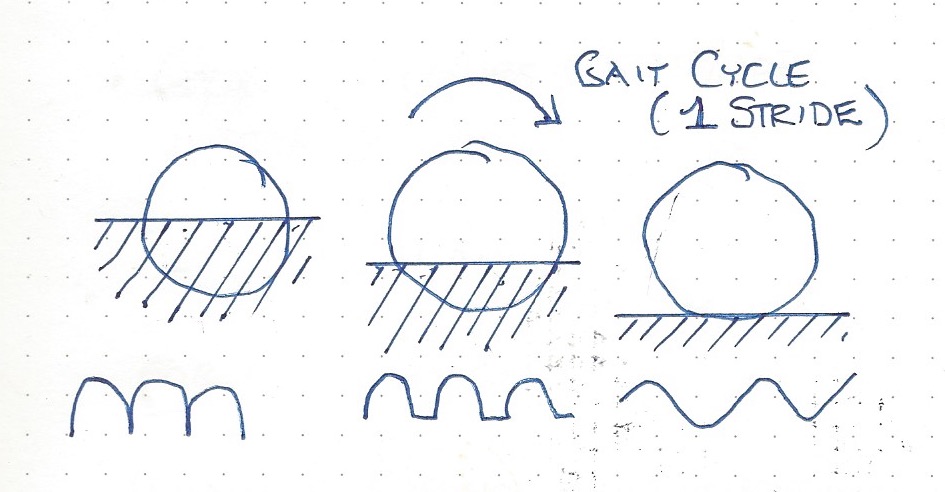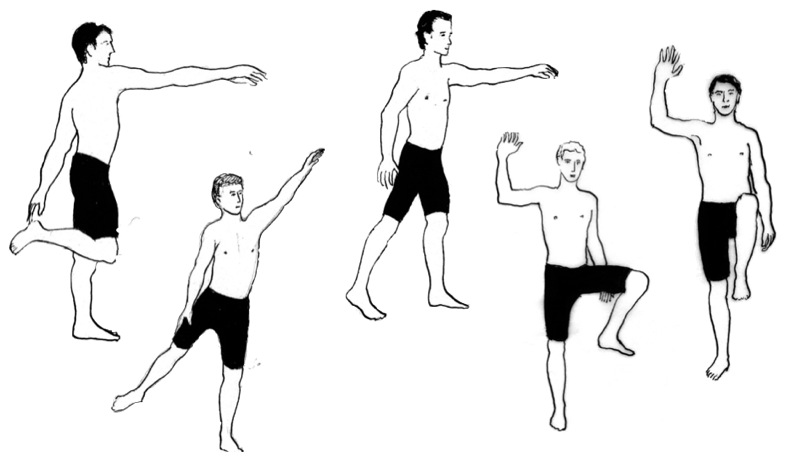MOVING: WALKING OR RUNNING
For many of us, the following statement will be obvious, but many people do not fully grasp this concept:
When walking or running, the opposing arm follows the leg. When the right leg comes forward, the left arm should too, and vice/versa.
When this does not occur we in essence move by falling forward and pushing ourselves up with our legs to keep from falling to the ground, engendering a strong heel strike and high shock loads on the body. The prevalence of this form of gait can be inferred from the ~10% annual growth rate of the Orthopedic and Orthotic Footwear industries. This falling-forward gait embodies a reflex mechanism called Automatic Gait, which we ideally mature away from using, as it is a stability mechanism to prevent tipping forward in the vector of movement and cannot perform this role when used as a primary gait mechanism, instead of using the lower leg.

When we move as fascia it can feel as if we are weightless – tensionally counterbalancing the compressional gravitational effect. The vector of the acceleration of our mass oscillates sinusoidally.
As we more fully engage our core, our stride lifts our mass above the surface upon which we are moving, as presented in the illustration. This is only possible if the body mass is tensionally connected across the midline into the arms. Integrating cross-lateral arm activation into gait mechanics globally stimulates our neurology and other attributes of our physiology. This can occasionally be witnessed in a running gait where the runner appears to be gliding over the ground, instead of bouncing along1.
// In a quadruped, the rear legs push and the front legs pull. In a bird, the front legs pull.
EXERCISES TO IMPROVE CROSS-LATERAL INTEGRATION
It is common to find poor cross-lateral integration. This integration can be improved by doing any of the exercises pictured below on both sides. With kids, these exercises can be integrated into games. More information on this can be found by searching “Cross-Crawl”, or “Brain Gym”.
Another excellent form of exercise is climbing. If you can a local Climbing Wall. This activity is significantly developmentally helpful at any age.

The posts in this category explore tension and compression in animal morphology:
TENSEGRITY AND CONNECTIVE TISSUE
and in this category dissects many attributes of locomotion:
STANCE AND GAIT MECHANICS
This post focuses on another aspect of arm kinematics:
AN ARGUMENT FOR THE POSITION OF THE ARMS FREE-HANGING
- The physics of this gait dynamic is explored in these posts: KINSEGRITY. ↩︎
